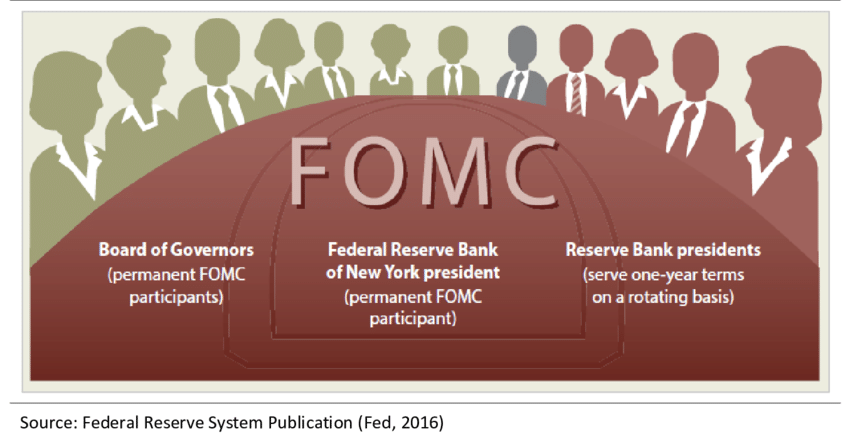Market Implications of the Federal Open Market Committee (FOMC) Decision


The Federal Open Market Committee (FOMC) has delivered a 25 basis point (bps) rate cut, bringing the federal funds rate to a target range of 4.75%–5.00% assuming prior range was 5.00%–5.25%.
Simultaneously, the Committee has signaled the start of quantitative easing (QE) in December while maintaining that monetary policy remains restrictive. This combination creates a nuanced, multi-layered message with significant implications for asset prices, inflation expectations, and the yield curve.
Rate Cut (25 bps): Dovish but measured signal reinforces the Fed’s pivot toward easing but avoids aggressive front-loading. Equities mildly positive; supports risk assets but lacks the punch of a 50 bps cut.
Register for Tekedia Mini-MBA edition 19 (Feb 9 – May 2, 2026): big discounts for early bird.
Tekedia AI in Business Masterclass opens registrations.
Join Tekedia Capital Syndicate and co-invest in great global startups.
Register for Tekedia AI Lab: From Technical Design to Deployment (begins Nov 15th).
Bonds: 2-year yields likely dip modestly ~5–10 bps, reflecting the cut but tempered by the “still restrictive” language. USD: Slight softening, though limited by the cautious pace.
The Fed will resume balance sheet expansion via asset purchases likely Treasuries and MBS starting in December. This is earlier and more aggressive than consensus expectations, which anticipated QT tapering at best.
Sharp compression 10-year could fall 15–25 bps intraday. Yield curve: Steepening as short rates are anchored by cuts, while long rates drop on QE. Strong bullish impulse—equities, gold, crypto likely rally.

Inflation breakevens: Rise as QE is classically inflationary. The Hawkish anchor purpose prevents markets from pricing in unrestrained easing or a return to ZIRP. Markets may now price one more 25 bps cut in 2026, not a full easing cycle.
Real rates remain positive fed funds ~4.75% vs. core PCE ~2.7% ? real rate ~2.05%, justifying the “restrictive” claim. Verbal tightening to counter QE’s dovish tilt. Equity Rotation: Favor rate-sensitive sectors tech, REITs, small-caps over defensives.
Inflation Hedge: Overweight TIPS, gold, commodities—QE reflation trade. USD Shorts: QE + “restrictive” cap = moderate dollar weakness, not collapse. VIX likely drops below 15 as QE provides a put.

The Fed is easing aggressively via QE while talking tough on rates to manage expectations. This is bullish for risk assets, bearish for the dollar, and steepening for the curve. The “still restrictive” caveat is rhetorical discipline, not a policy barrier—QE is the dominant signal.
Long equities especially Nasdaq, long gold, short 10-year yields, steepener trades. A steepening yield curve means the spread between long-term and short-term yields is widening.
25 bps rate cut lowers short rates. QE in December crushes long rates even more. Banks profit from borrow short (low), lend long (higher) ? NIM expansion. Tech/growth stocks benefit from lower long-term borrowing costs.
Bond Prices; Rise (yields fall) ? duration-sensitive bonds rally. Yield curve steepening = long-term rates fall faster than short-term rates. In this case: QE crushes the 10-year, rate cut anchors the 2-year ? spread widens ? bull steepener.
Bullish for banks, growth stocks, gold; bearish for USD and cash. Rate cuts generally favor risk assets like cryptocurrencies by reducing borrowing costs, boosting liquidity, and encouraging capital rotation from low-yield safe havens (e.g., Treasuries) into higher-volatility plays.
Historical patterns show Bitcoin (BTC) and Ethereum (ETH) often rally post-FOMC easing, with a 0.25% tightening shock linked to a ~0.25% BTC price drop on announcement day—implying the reverse for cuts.
Ending QT and lower rates could add $100B+ in monthly reserves, historically correlating with BTC gains like in 2021 bull run post-easing. Cheaper credit spurs speculative flows into DeFi, NFTs, and altcoins. Analysts like Michael van de Poppe predict a BTC pullback to $109K–$110K before pushing toward new highs above $112K if dovish signals hold.
Despite pre-meeting dips, spot BTC/ETH ETFs saw strong Q3 inflows ($22B+), underscoring institutional resilience. Pre-FOMC caution led to a 1.5% market cap drop to $3.93T on Oct 28, with BTC at ~$113K (-1.4%) and ETH at $4.09K (-3.7%). A “wait-and-see” Powell tone could trigger short-term selling.
Government shutdown limits data, while AI-driven job shifts and tariffs add uncertainty. XRP and BNB dipped 1–1.6%, reflecting broader altcoin pressure. TOTALCAP remains in a corrective ascending channel, suggesting potential reversals even post-cut.




